|
Known for their bizarre appearance and unique abilities, chameleons are
undoubtedly one of the most interesting creatures in the animal kingdom.
You probably know they can change their skin color but do you know where
chameleons live or how many chameleon species there are? If you want to
learn more about these amazing animals including some chameleon facts
for kids or if you consider getting yourself a chameleon pet, it’s
highly recommended to check out this post with some Cool Chameleon Facts
You’ll Want To Know.
|
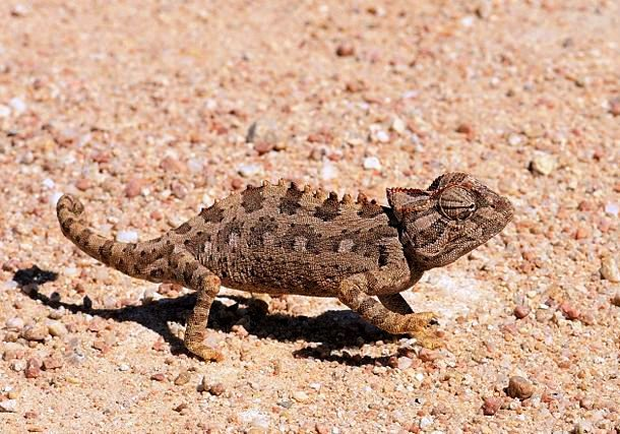 |
Chameleon habitat ranges greatly from rain forests and mountains to
savanna and deserts, but all chameleons live in warm (tropical or
subtropical) areas.
|
 |
|
While chameleons can be found in many
parts of the world including southern Europe, Southeast Asia, Hawaii,
California, and Florida, almost half of the world's 200 chameleon
species live in Madagascar.
|
 |
The English word “chameleon” is derived from the Latin word “chamaeleón”
which translates as “the lion of the ground.”
|
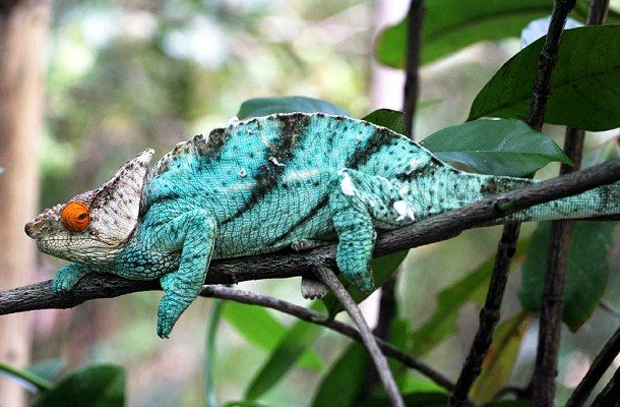 |
With an adult size of up to 70 cm (27 in), the Parson’s chameleon is
considered the largest chameleon species in the world.
|
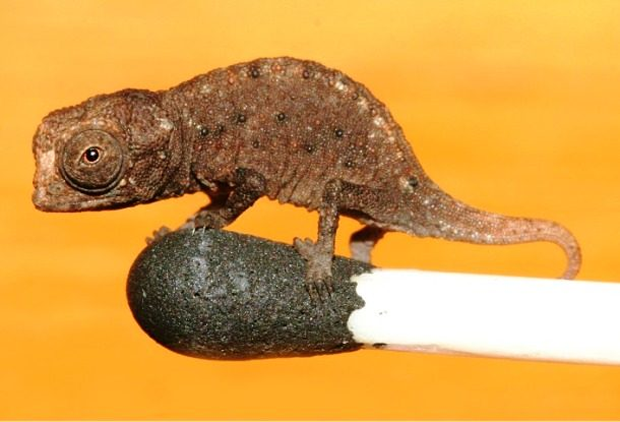 |
The world´s smallest chameleon, the leaf chameleon, measures just about
1.6 cm (0.5 in), and it can sit comfortably on the head of a match. It
is also one of the smallest vertebrates ever discovered.
|
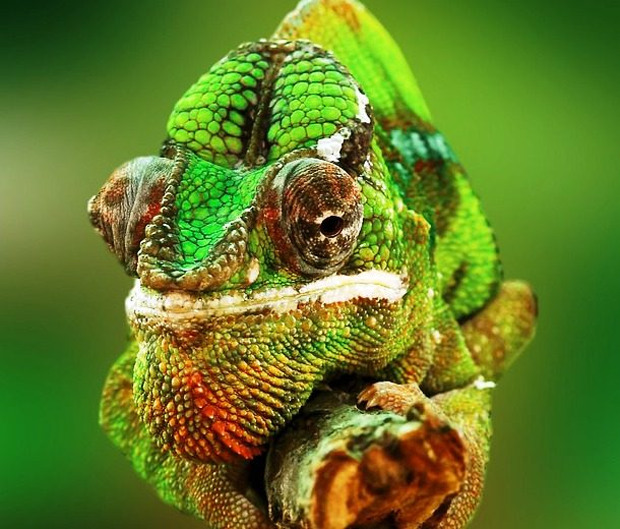 |
Boasting the most distinctive eyes of any reptile, chameleons have large
eyes with a 360-degree arc of vision and can see two directions at once.
|
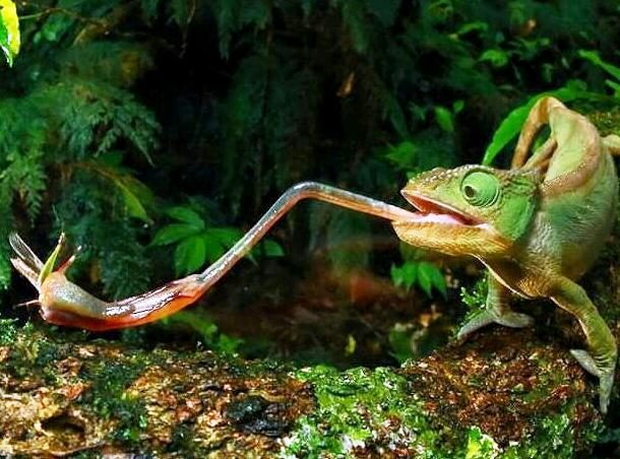 |
Chameleons also have a very distinctive tongue. Up to 2 times longer
than their body, the tongue can be rapidly projected to capture prey.
|
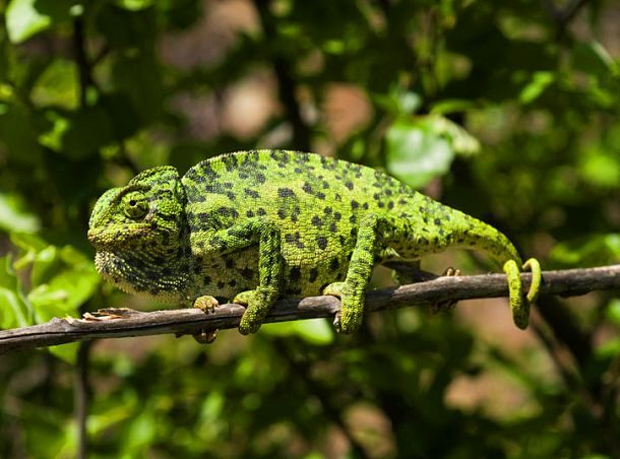 |
Chameleons generally eat insects, but larger species, such as the common
chameleon, may also eat other lizards and even birds.
|
|
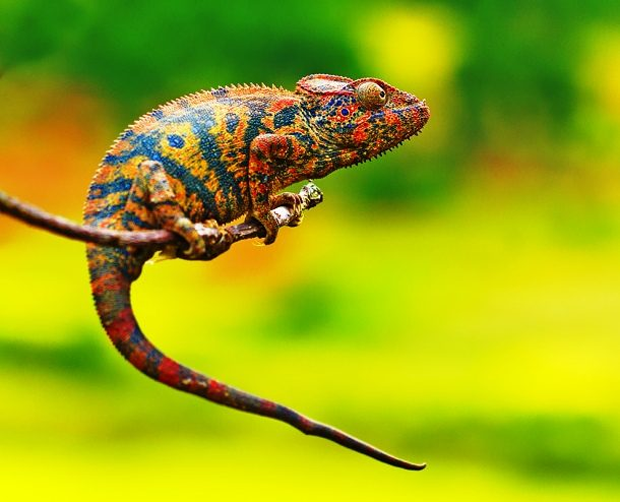 |
|
Like
snakes, chameleons do not have an outer or a middle ear, so there is
neither an ear opening nor an eardrum. However, chameleons are not deaf;
they can pick up sound frequencies in the range of 200–600 Hz.
|
 |
Contrary to popular belief, when a chameleon changes its skin color, the
animal usually is not trying to camouflage itself by blending into the
environment. More often, it does that to control its body temperature,
to communicate with other chameleons, or to express emotions.
|
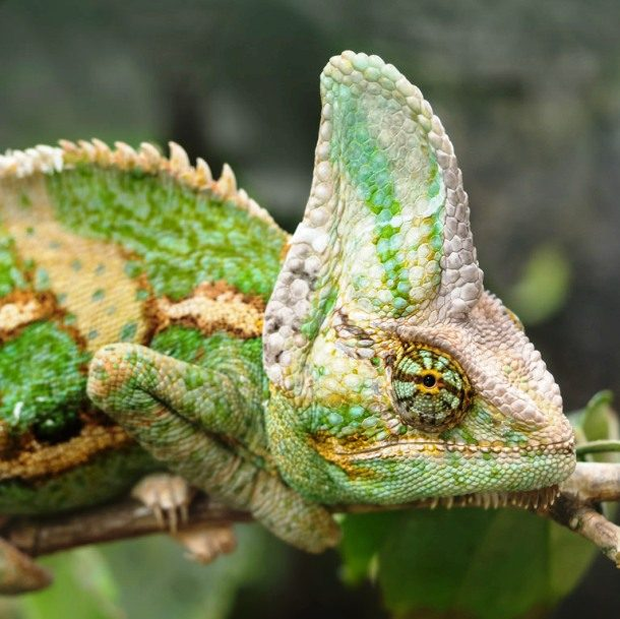 |
Found in the dry mountainous regions of Yemen and Saudi Arabia, the
veiled chameleon has a distinctive growth on its head called a casque.
The casque acts like a water collector - droplets of moisture roll down
it and right into the chameleon's open mouth.
|
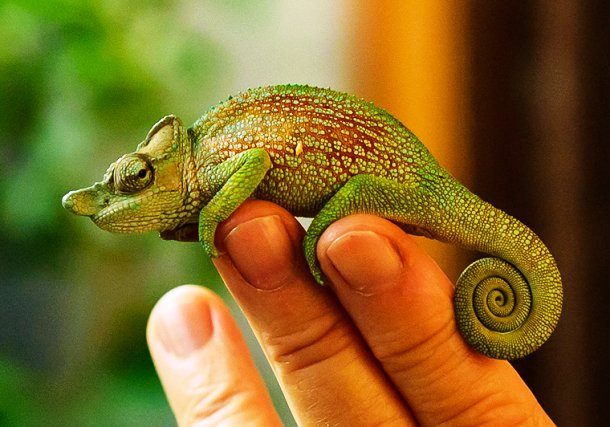 |
|
Chameleons usually live 2 to 3 years in the wild. In captivity, they
have been known to live up to 10 years. |